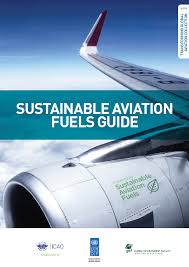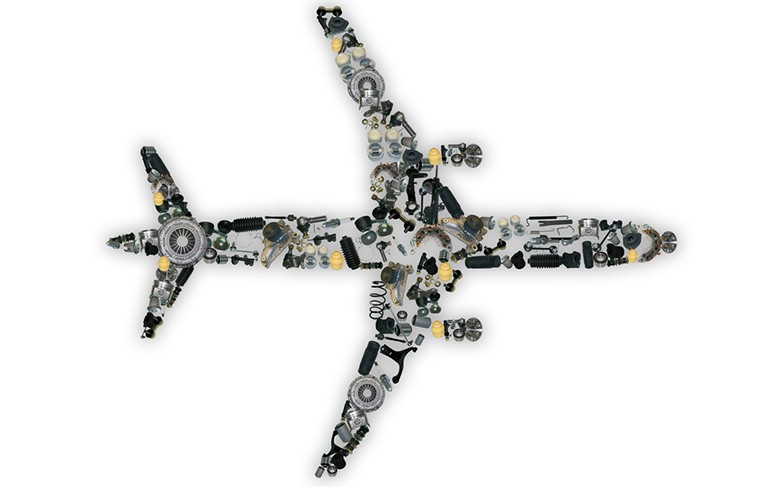The Winds of Change: Aviation's Push Towards Sustainability
For years, the aviation industry has faced increasing scrutiny regarding its environmental impact. As concerns about climate change intensify, the pressure to reduce carbon emissions has led to the implementation of stricter regulations and a growing focus on sustainable solutions. Buckle up as we navigate the evolving landscape of aviation sustainability, focusing on the critical role of stricter environmental regulations and the promising potential of Sustainable Aviation Fuel (SAF).
The Regulatory Landscape: A Flight Plan for Emission Reduction
The International Civil Aviation Organization (ICAO) plays a pivotal role in setting global standards for aviation. One of its key initiatives is the Carbon Offsetting and Reduction Scheme for International Aviation (CORSIA). CORSIA aims to stabilize international aviation CO2 emissions at 2020 levels. "CORSIA is a global scheme designed to address any increase in total CO2 emissions from international aviation above the 2020 levels,” states ICAO.
Fact 1: CORSIA requires airlines to offset any growth in CO2 emissions above the 2020 baseline through investments in emissions reduction projects.
But the journey doesn't end there. Individual countries and regions are also implementing their own stringent regulations. The European Union, for instance, has included aviation in its Emissions Trading System (ETS), compelling airlines operating within the EU to reduce their emissions or purchase allowances.
Fact 2: The EU ETS covers flights within the European Economic Area (EEA), holding airlines accountable for their carbon footprint.
Sustainable Aviation Fuel: The Jet Fuel of the Future?
While regulations set the stage, Sustainable Aviation Fuel (SAF) offers a tangible path towards decarbonization. SAF is produced from sustainable feedstocks such as algae, non-food crops, and even waste products, significantly reducing the lifecycle carbon emissions compared to traditional jet fuel.
“SAF is not a silver bullet, but it is the most promising pathway for aviation to reach net-zero emissions by 2050,” emphasizes a recent report by the Air Transport Action Group (ATAG).
Stat 1: SAF can reduce lifecycle CO2 emissions by up to 80% compared to conventional jet fuel.
However, scaling up SAF production faces significant challenges. The cost of SAF is currently higher than that of traditional jet fuel, and the availability of sustainable feedstocks is limited. Governments and industry players are working together to incentivize SAF production and drive down costs.
Fact 3: SAF can be blended with conventional jet fuel, requiring no modifications to existing aircraft engines or infrastructure.
Stat 2: Current SAF production only accounts for less than 1% of global jet fuel consumption, highlighting the need for massive scale-up.
Beyond Fuel: A Holistic Approach to Sustainability
While SAF takes center stage, other initiatives contribute to a more sustainable aviation industry. These include:
- Aircraft Design & Technology: Developing more fuel-efficient aircraft designs and utilizing advanced technologies like lightweight materials and improved aerodynamics.
- Operational Improvements: Optimizing flight routes, reducing taxiing times, and implementing more efficient air traffic management systems.
- Carbon Offsetting: Investing in projects that remove CO2 from the atmosphere, such as reforestation and carbon capture technologies.
“The future of aviation hinges on our ability to embrace innovation and collaborate across the entire value chain,” according to the CEO of a leading aircraft manufacturer.
Fact 4: Investing in new aircraft technologies can improve fuel efficiency by 15-20%.
Stat 3: Optimized flight routes and air traffic management can reduce fuel consumption by up to 10%.
Charting a Course for a Greener Aviation Future
The aviation industry is at a critical juncture. Stricter environmental regulations are pushing airlines to reduce their carbon footprint, and Sustainable Aviation Fuel offers a promising pathway to achieve ambitious emissions reduction targets. While challenges remain in scaling up SAF production and overcoming cost barriers, the commitment from governments, industry players, and researchers is undeniable. The journey towards a greener aviation future is underway, and the skies are the limit.
Takeaway: By embracing stricter regulations, investing in SAF, and fostering innovation across the aviation ecosystem, we can ensure that future generations can continue to enjoy the benefits of air travel without compromising the health of our planet.




